Disclosure: This article contains affiliate links. We may earn a commission from purchases at no extra cost to you, which helps our travel content.
The moment I stepped off the local bus in Bandipur, time seemed to slow down. Prayer flags fluttered against the backdrop of the Himalayan foothills, and the golden afternoon light bathed the traditional Newari architecture in a warm glow. After weeks of meditation in Kathmandu, I was seeking a deeper connection—not just with Nepal's stunning landscapes, but with its people and ancient rhythms. What followed was a week of living with a local family that transformed my understanding of Nepali culture, sacred spaces, and most importantly, the geometric patterns that connect us all. This wasn't just travel; it was a masterclass in presence that cost less than a weekend in London but enriched my spirit immeasurably. Ready to discover how a homestay in this hidden Himalayan gem might just change your perspective too?
Finding Your Nepali Family: How to Book an Authentic Homestay
When I first decided to visit Bandipur, I knew hotels wouldn't offer the immersion I was seeking. I wanted to experience life through local eyes—to sit cross-legged on floor cushions sharing dal bhat (lentils and rice) with a family, to learn the rhythms of daily life in this ancient trading post perched 1,030 meters above sea level.
Rather than booking through major platforms, I connected with the Community Homestay Network, a social enterprise that ensures money flows directly to families while maintaining quality standards. For 1200 rupees per night (roughly $10), I secured accommodation, home-cooked meals, and cultural experiences with the Shrestha family—a price point that supported the local economy while keeping my budget intact.
My host mother, Sanu, welcomed me with a tika blessing on my forehead and a cup of masala chai that warmed both hands and heart. Their 150-year-old traditional Newari home featured intricate woodcarvings around every window and doorframe—my first encounter with the sacred geometry that would become a theme of my stay.
The room itself was simple: a comfortable mattress on a wooden platform, clean linens, and a small window overlooking terraced hills. The bathroom was shared and basic, with a bucket shower that taught me patience and mindfulness in my daily routine. But what the accommodation lacked in luxury, it more than compensated for in authenticity and connection.
Before arriving, I made sure to pack my travel journal and a few small gifts from England—photos of Sheffield, tea, and chocolates. These simple offerings created an immediate bridge between our worlds and sparked conversations that continued throughout my stay.

💡 Pro Tips
- Book through Community Homestay Network for vetted, ethical homestay options
- Pack small, meaningful gifts from your home country to share with your host family
- Request to stay in a traditional Newari house for the most authentic architectural experience
Daily Rhythms: Embracing the Pace of Himalayan Life
My days in Bandipur began with the gentle sound of Sanu grinding spices on a stone mortar before dawn. Rather than fighting my usual sleep patterns, I embraced this natural rhythm—rising with the sun for morning meditation on the rooftop terrace, where the geometric precision of the Himalayas stretched before me like a sacred mandala.
Breakfast typically consisted of sel roti (sweet rice bread) and milk tea, often shared with three generations of the family around a low wooden table. These morning conversations, despite language barriers, became a cornerstone of my experience. I'd brought my pocket language guide which proved invaluable for basic communication and often sparked laughter as I fumbled through pronunciations.
My host father, Ramesh, was a farmer who invited me to join him tending the family's terraced fields. Working alongside him, I gained a profound appreciation for the mathematical precision of these ancient agricultural systems. The terraces themselves form perfect geometric patterns across the hillsides—human ingenuity working in harmony with natural contours, a living example of the sacred geometry that has fascinated me since India.
Afternoons often found me helping Sanu prepare meals, learning to fold perfect momos (dumplings) or knead roti dough to the right consistency. These kitchen lessons became moving meditations—the repetitive motions and focus on technique grounding me in the present moment far more effectively than any guided app.
In the evenings, neighbors would often drop by, and the courtyard would fill with conversation, local raksi (rice wine), and occasionally music. One night, Ramesh's brother brought out his sarangi (traditional string instrument) and played folk songs as stars appeared above. In these moments, I felt the invisible geometric web that connects us all across cultures and languages—patterns of human connection that transcend our differences.

💡 Pro Tips
- Rise early to experience the full daily rhythm of Nepali village life
- Offer to help with household chores as a way to learn and connect beyond tourist experiences
- Bring photos of your daily life at home to share and bridge cultural understanding
Cultural Immersion: Festivals, Traditions & Sacred Spaces
My autumn visit to Bandipur coincided with Tihar, the Festival of Lights, providing an extraordinary window into Nepali spiritual life. Each day of this five-day celebration holds special significance, and being part of a family allowed me to participate rather than merely observe.
On Kukur Tihar (day honoring dogs), I joined the children in creating marigold garlands and applying tika to the foreheads of local canines. During Laxmi Puja, we spent hours creating intricate geometric rangoli patterns from colored rice powder at the threshold of the home—sacred geometry made manifest through devotional art. The precision and symmetry of these designs echoed the mandalas I'd studied in India, yet with distinctly Nepali characteristics.
Beyond festivals, my host family took me to Bandipur's Khadga Devi Temple, a sacred site usually closed to outsiders but accessible through their connections. Inside, the priest explained how the temple's proportions follow ancient Vedic principles of sacred measurement—the same mathematical ratios found in everything from sunflower seed patterns to spiral galaxies.
For outdoor enthusiasts, the hike to Thani Mai Temple provided both spiritual connection and physical challenge. I packed my hiking daypack with water and offerings, then joined pilgrims on the hour-long ascent through rhododendron forests. At the summit, panoramic views of the Annapurna and Dhaulagiri ranges revealed nature's perfect geometry on an epic scale.
Most precious were the impromptu cultural exchanges: learning traditional Nepali dance steps during an evening community gathering; being taught to play simple melodies on the bamboo flute by a neighbor's child; joining women at the communal water tap where gossip and wisdom flow as freely as the mountain spring water.
Through it all, I practiced what I call 'geometric listening'—finding the patterns and connections in conversations despite language differences, observing the sacred geometry in human relationships that transcends cultural boundaries.
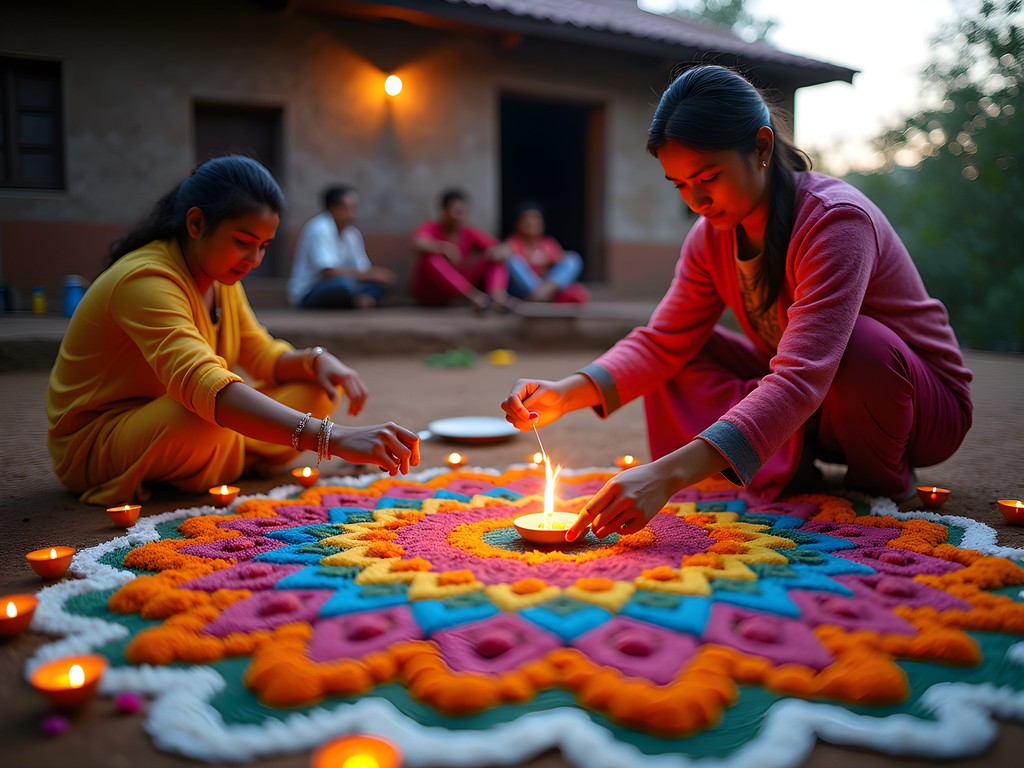
💡 Pro Tips
- Research which festivals might coincide with your visit for enhanced cultural experiences
- Ask your host family about local temples and whether they can facilitate appropriate visits
- Learn basic Nepali greetings and thank-you phrases to show respect during ceremonies
Beyond the Homestay: Exploring Bandipur's Hidden Gems
While the homestay formed the heart of my experience, Bandipur itself deserves exploration. This former Newari trading post maintains its traditional architecture and car-free bazaar, offering a living museum of Himalayan history without the crowds of more famous destinations.
Each morning before the day grew warm, I'd practice yoga and bodyweight exercises at Thani Mai viewpoint, where the rising sun illuminated the snow-capped Himalayas. This natural fitness studio cost nothing but offered everything—fresh mountain air, bird songs, and panoramic inspiration. I'd often bring my travel yoga mat for these sessions, its lightweight design making it perfect for backpacking through Nepal.
The Silk Road Coffee House became my afternoon writing spot, where I'd journal geometric patterns observed throughout the day while sipping locally grown coffee. The owner, Binod, is a wealth of information about Bandipur's history and can point you toward lesser-known viewpoints and trails.
For a deeper dive into local ecology, I recommend the half-day hike to Ramkot village, where traditional round Magar houses demonstrate yet another form of sacred geometry in Nepali architecture. The trail winds through forests and terraced fields, offering glimpses of rural life unchanged for generations.
Silk farming has historical significance in Bandipur, and the small Silk Farm museum provides fascinating insights into this traditional craft. What struck me most was the mathematical precision of the silkworms' work—nature creating perfect geometric patterns through instinct.
The local Community Library, though small, hosts cultural programs where travelers can learn traditional skills like bamboo weaving or momo making. I spent one afternoon learning to create geometric patterns in bamboo mats—a meditation in patience and precision.
Throughout my explorations, I found Bandipur's magic lies in its unhurried pace. Unlike Kathmandu or Pokhara, here you can sit in the ancient bazaar, watching light and shadow play across carved wooden facades, and feel you've stepped outside time altogether.

💡 Pro Tips
- Visit the bazaar early morning when locals are setting up for the day for authentic photography
- Bring a headlamp for evening walks as village lighting is minimal
- Support the community by purchasing locally made crafts like bamboo products or handwoven textiles
Mindful Budget Travel: Making Your Rupees Go Further
Traveling mindfully isn't just about spiritual awareness—it extends to financial consciousness too. Nepal is already budget-friendly, but Bandipur offers exceptional value, especially through homestays.
My week-long experience cost approximately: - Homestay accommodation: 1200 rupees/night ($10 USD) - All home-cooked meals: Included in homestay price - Local bus from Kathmandu: 450 rupees ($3.75 USD) - Cultural activities and donations: 2000 rupees ($16.50 USD) - Miscellaneous expenses: 3000 rupees ($25 USD)
Total for a transformative week: Under $120 USD
Beyond the obvious savings, homestays offer hidden economic benefits. With meals included, you'll avoid restaurant markups. Your host family can advise on fair prices for anything you need, preventing the 'tourist tax' common in more commercial areas.
I brought my filtered water bottle which saved money on bottled water while reducing plastic waste—an essential tool for mindful travelers in regions where tap water isn't potable.
Bandipur's most profound experiences cost nothing: sunrise views, community connections, and the geometric patterns visible everywhere from temple architecture to terraced fields. I found that limiting digital distractions enhanced these free pleasures immeasurably. The spotty Wi-Fi became a blessing, forcing presence in ways that expensive digital detox retreats promise but rarely deliver.
For souvenirs, I sought items with meaning rather than merely decorative objects. A handwoven bamboo mat from an elderly artisan serves as my meditation seat back in Sheffield—a functional reminder of geometric patterns observed in Bandipur that cost just 300 rupees ($2.50).
Perhaps the most valuable budget tip is temporal rather than financial: visit during shoulder season (October-November or March-April) when weather remains pleasant but tourist numbers dwindle. This timing allowed me to experience authentic village life without competing with crowds, while still enjoying clear mountain views and comfortable temperatures for outdoor exploration.
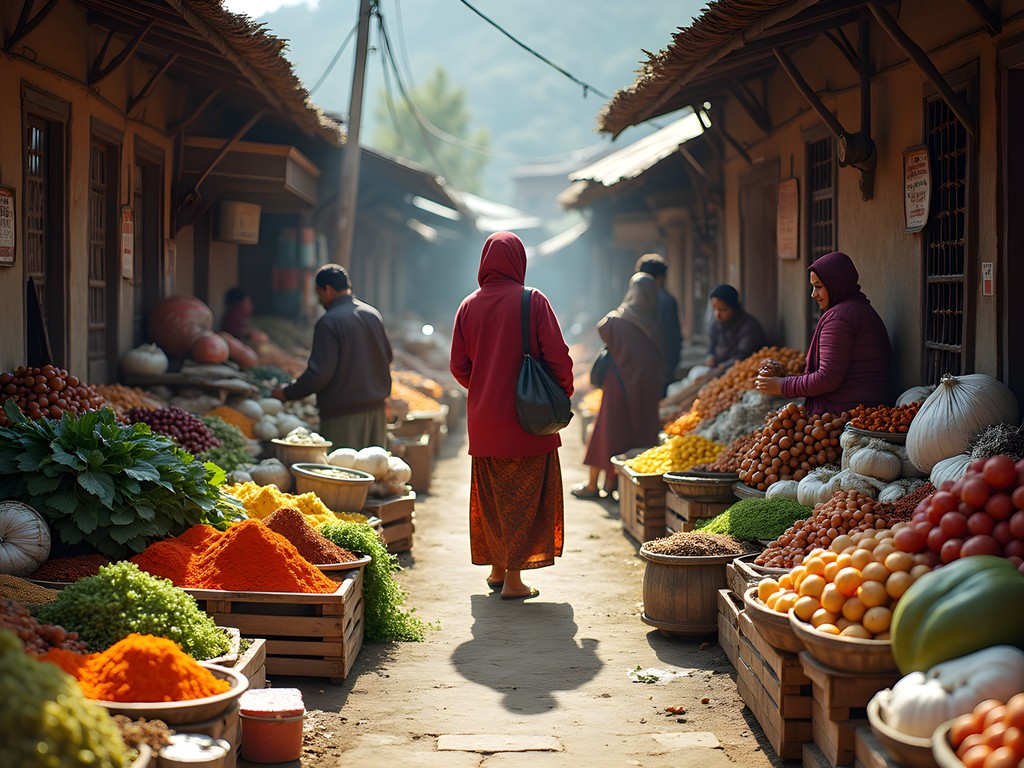
💡 Pro Tips
- Carry small denominations of rupees as change can be scarce in village shops
- Offer to help cook meals as both a cultural exchange and a way to learn budget-friendly Nepali recipes
- Visit local markets with your host family to buy ingredients—a cultural experience that supports the local economy
Final Thoughts
As my week in Bandipur drew to a close, I realized that living with locals had transformed what could have been a simple sightseeing trip into a profound journey of connection. The sacred geometry I seek in my travels appeared not just in temple architecture or mountain vistas, but in the rhythmic patterns of daily life and human relationships that transcend cultural differences. My homestay family didn't just provide accommodation—they offered a window into a way of living that balances tradition with adaptation, spirituality with practicality.
Whether you're seeking budget travel options, cultural immersion, or a deeper connection to Nepal beyond the trekking trails, Bandipur's homestays offer something hotels simply cannot: authenticity. As you plan your own journey, remember that the most meaningful souvenirs aren't things but moments—the shared laughter over language mishaps, the silent wonder of Himalayan sunrises, the geometric perfection of a well-formed momo dumpling made by your own hands. The question isn't whether you can afford this experience, but whether you can afford to miss it.
✨ Key Takeaways
- Homestays offer deeper cultural immersion at a fraction of hotel prices
- Sacred geometry appears in everything from architecture to agriculture in Bandipur
- Shoulder seasons (October-November or March-April) provide ideal conditions with fewer tourists
- The most meaningful connections often happen during everyday moments rather than tourist activities
📋 Practical Information
Best Time to Visit
Fall (October-November) or Spring (March-April)
Budget Estimate
$15-20 per day including homestay, food, and activities
Recommended Duration
5-7 days
Difficulty Level
Intermediate

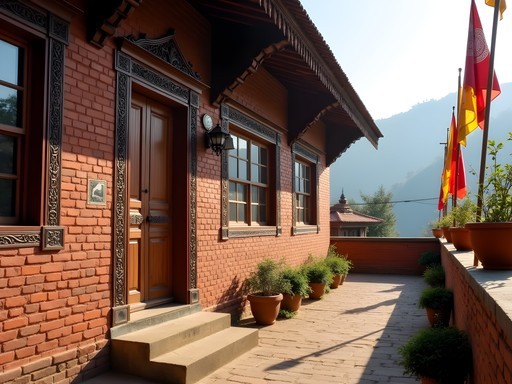
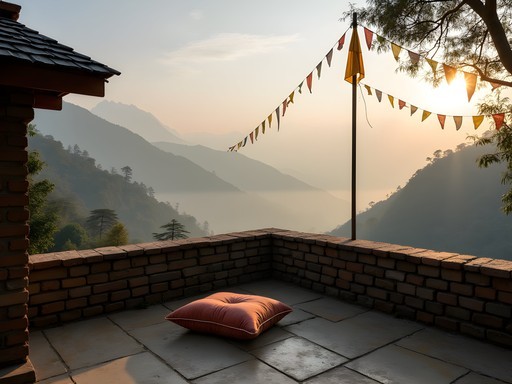

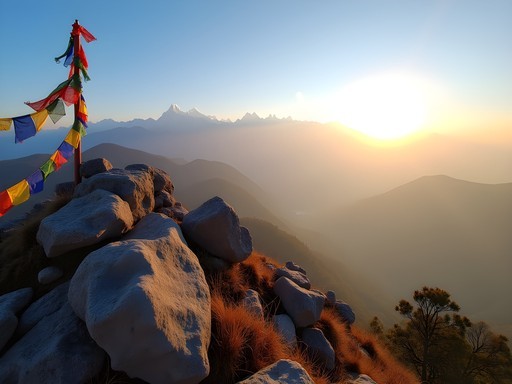
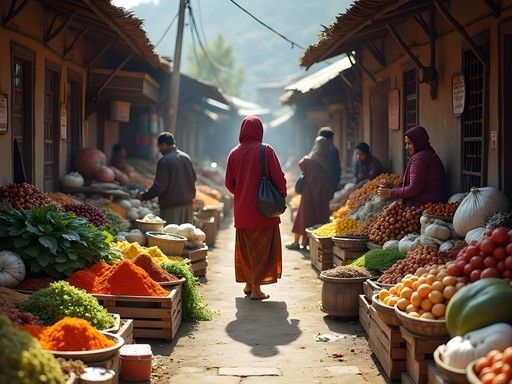


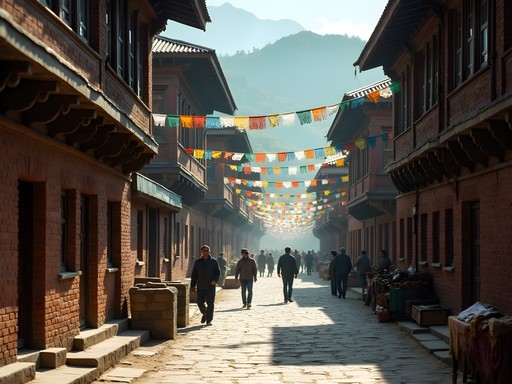
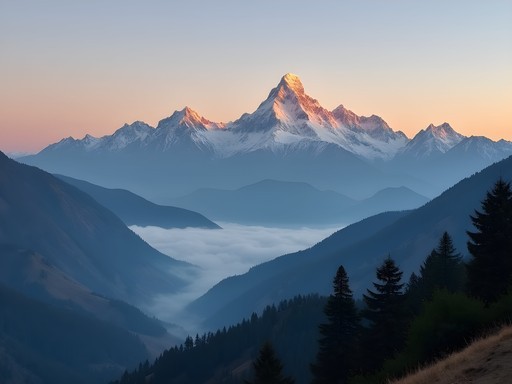






Comments
Sophia Gomez
Leah, this post captures the magic of Bandipur perfectly! I spent two weeks in Nepal last year documenting sustainable tourism initiatives, and the homestay program in Bandipur stood out as one of the best examples of tourism that actually benefits local communities. The way they've preserved the traditional Newari architecture while adapting homes for guests is such a thoughtful approach. For anyone planning a visit, I'd suggest timing your trip around one of the local festivals if possible. I was lucky enough to be there during Tihar (Festival of Lights) and the entire village was decorated with oil lamps and marigold garlands. The families invite guests to participate in all the rituals - definitely a once-in-a-lifetime experience!
citystar
Bandipur is such an underrated gem! We almost skipped it on our Nepal trip last year but ended up staying 4 nights instead of 2. The hiking around the village is spectacular, especially the trail to Ramkot. One tip for anyone going - bring a good headlamp as the power can be spotty in the evenings. I used my headlamp every night and was glad to have it. Also, don't miss the sunrise view from Thani Mai Temple - absolutely worth the early wake-up!
travellife
The Ramkot hike was amazing! Did you try the local yogurt (juju dhau) at that little farm on the way?
citystar
Yes! That honey yogurt was incredible. We bought some every day on our way back to the village.
coolninja6478
This looks amazing!!! How did you find your homestay? Did you book in advance or just show up? Going to Nepal in November and really want this kind of experience!
Sophia Gomez
Not the author, but I've done homestays in Nepal twice. I'd recommend booking through Community Homestay Network - they're a social enterprise that connects travelers directly with local families. Much more authentic than the options on big booking sites, and the money goes straight to the families.
coolninja6478
Thanks so much!! Will definitely check them out. So excited!!
travellife
This post brought back so many memories! I did a homestay in Bandipur last year and it was truly the highlight of my Nepal trip. The family I stayed with taught me how to make momos from scratch, and we spent evenings on their porch watching the sunset over the mountains. Did you get to try raksi with the locals? That homemade rice liquor is something else! 😂
coolninja6478
Omg the raksi!! I couldn't handle it but the locals were downing it like water 🤣
travellife
Haha exactly! One sip and I was feeling it, but the grandfather in my homestay family had like 3 glasses with dinner every night!
Claire Hawkins
Leah, this post is exactly what travel blogging should be about - genuine connections and cultural immersion! We took our kids (8 and 10) to Bandipur last year for a homestay, and it completely changed how they view travel. They still talk about helping their 'Nepali grandmother' feed the chickens and learning to make sel roti. The family we stayed with had children similar in age, and despite the language barrier, they were playing games together within hours. For families considering this experience - do it! It's so much more educational than standard hotels. The Newari architecture in Bandipur is also a photographer's dream. Did you get a chance to visit the silk farm outside the village? That was surprisingly fascinating for all of us.
Leah Moreau
Claire, I love that you did this with your kids! What a gift to give them that perspective at a young age. I missed the silk farm - adding it to my list for next time!
globelover
Claire - any specific tips for finding family-friendly homestays? My kids are 6 and 9.
Claire Hawkins
Definitely mention your kids' ages when booking! Many homestays will match you with families with similar-aged children. Also pack small games that transcend language barriers - our UNO cards were a huge hit!
photonomad
Your post captures the essence of Bandipur so beautifully! I spent two weeks there in 2021 and still think about the sunrise views from my homestay window. One tip for anyone heading there - bring a good phrasebook or download a Nepali language app. Even learning basic greetings made such a difference in connecting with my host family. I used my pocket translator which was incredibly helpful for more complex conversations. Did you find the hike to Ramkot village worth it? That was one of my favorite day trips from Bandipur.
globelover
How did you find your homestay? Going to Nepal in December and really want this kind of experience!
Leah Moreau
I actually booked through a local community tourism initiative - there's a link in the 'Finding Your Nepali Family' section of the post! They match travelers with families based on preferences and duration. Feel free to DM me if you need more specific info!
globelover
Perfect, thanks! Just found it. Can't wait for my trip!
adventureexplorer867
This post brings back so many memories! I did a homestay in Bandipur last year and it was the highlight of my Nepal trip. That moment when the grandmother of the house insisted I learn to make momos with her despite our language barrier - priceless! Did you get to experience any local festivals during your stay? I was lucky enough to be there during Tihar and the whole village was lit up with oil lamps. Magical doesn't even begin to describe it.
Leah Moreau
I missed Tihar but was there for a local wedding celebration! The family I stayed with insisted I join in - they even lent me traditional clothes. Such an unexpected honor!
adventureexplorer867
A wedding! That's even better - talk about authentic cultural immersion! Did they make you dance? I bet the food was incredible too.
budget_backpacker
We did the public transportation too and it was great! Pro tip: sit on the right side of the bus from Kathmandu for the best views of the valleys. The switchbacks are intense but worth it!
SoloFemTraveler
This looks amazing! As a solo female traveler, did you feel safe in the homestay? Any tips?
Leah Moreau
Absolutely! Nepal in general is very safe for solo female travelers, and homestays often feel even safer because you're with a family who looks out for you. I'd recommend reading reviews from other women if booking online, and trust your instincts when you arrive. The families I stayed with were incredibly respectful and protective - they treated me like a daughter!
Venture X
Premium card with 2X miles, $300 travel credit, Priority Pass